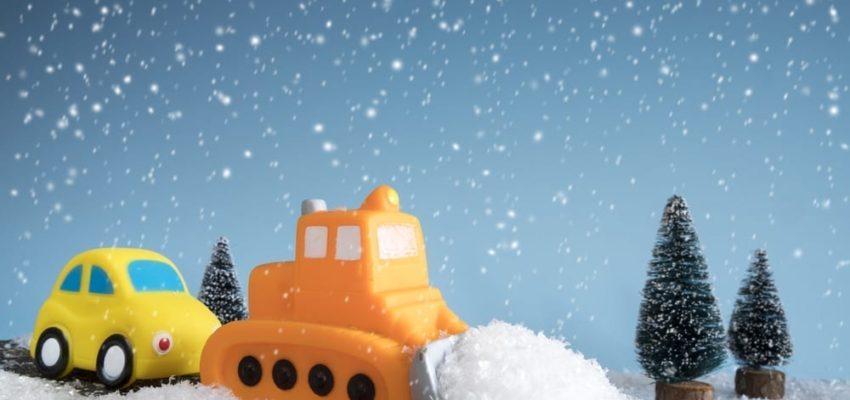Snow Plows, Salt Trucks and Sanders: Three Tips to Ease The Stress of Sharing The Roads With Maintenance Vehicles This Winter

Helpful Winter Safety Tips for New England
The winter season is upon us! As New Englanders we are very familiar with all the things that can make this season a bit more precarious than others. You don’t have to think that far back to recall the damage that can be done by ice dams, record-setting snowfall, and frigid temperatures that not only froze your toes, but your pipes too.
At Bearingstar Insurance, we are always thinking of ways that we can better protect and support our clients and neighbors during this time of year. One way for us to do this is to share information with you about some of the best known winter safety practices for preventing serious damage to your home and vehicles, as well as injury to you and your loved ones. An ounce of prevention today is likely to save you a whole lot of work, and expense, in the coming few months.
We hope this information allows you to spend less time worrying about what the wintry weather is doing to your home or car and more time building that perfect snowman with your kids.
Snow Plows, Salt Trucks and Sanders – Three Tips to Ease The Stress of Sharing The Roads With Maintenance Vehicles This Winter
Even the most enthusiastic drivers will probably admit that being at the wheel can sometimes be stressful whether it’s due to traffic, other driver’s lack of proper road etiquette, or your kids’ temper tantrum. But taking to the roads in the winter, especially in bad weather, can definitely take our anxiety to the next level. If winter driving causes you some kind of angst, you are not alone and it’s for good reason. Unfortunately, according to the U.S. Department of Transportation’s Federal Highway Administration, more than 116,000 Americans are injured in vehicle crashes on snowy, slushy or icy pavement every year.
Fortunately for us drivers today, 97 years ago, in Norway, two brothers, Hans and Even Overaasen, created the very first vehicle-operated plow. Their innovation single-handedly aided in the design, and manufacturing, of the snow plows that we rely on today to clear messy winter roads. However, as essential and important as these vehicles are, despite our best intentions, we as drivers can sometimes get in the way of them doing their job efficiently and effectively. That’s why Part I of our Winter Safety Tips Blog addresses winter driving tips and commonly asked questions related to sharing the road with snow plows, salt trucks, and sanders.
#1 To Pass Or Not To Pass, That Is A Great Question: According to the Departments of Transportation (DOT) for both Connecticut and Massachusetts, plows typically travel under 35 mph which can tempt even the most cautious driver to pass them, especially on the highway. You are not alone if you are unsure if you should pass these slow moving vehicles or just accept the fact that you are still going to get wherever you are heading, just a tad bit later than expected.
Below are three tips from the MA and CT DOTs on driving near or attempting to pass these plows:
- Stay clear of the wing plow blades. Snow plows, especially on expressways, may be equipped with wing plow blades that can extend anywhere between 2 and 10 feet beyond the width of the truck. These blades, themselves, can often weigh as much as a compact car. Despite their girth, though, it’s very possible drivers may not even see the blade because it can be hidden in a cloud of snow that is being kicked up by the plow while in operation.
- Don’t pass on the right. Plows are designed to push snow (and slush, rocks, ice and other debris) to the right of the plow, so if you attempt to pass on that side of the vehicle, all that debris could cause damage to your car as well as temporarily blind you. But, passing on the left comes with its own unique set of problems as well. Often, the road behind the snow plow is in much better shape than the road ahead – that’s why these vehicles are out there plowing, salting and sanding in the first place – so all your efforts to pass and get out ahead of a plow may simply lead to a more risky ride.
- Give plows plenty of space to work. In addition to pushing snow and ice, plows are equipped to drop sand and salt in an effort to de-ice the roadways. Therefore, be sure to leave at least three to four car lengths of space between you and the plow. If you’re too close, the salt and sand could hit your car and possibly cause damage to your vehicle.
In the event that you need to pass a plow, the Massachusetts and Connecticut DOTs strongly recommend you proceed with extreme caution, travel in the left lane and always give the plow, and any other vehicles you may be passing, a wide berth.
#2 Plows Do More Than Just Plow: Even after the storm has passed, snow plows and sanders may still be out, which would lead any curious driver to ask why and what exactly are they still doing on the roads once they’ve been cleared?
After plowing operations have finished, a roadway is left in a “black and wet” condition. This means there is still possibly the threat that any remaining moisture on the road may refreeze based on projected roadway temperatures. This post-storm treatment of roads is typically needed at night since temperature drops can be more dramatic after the sun goes down.
Whether you encounter a maintenance vehicle on a snow covered road or on one that appears completely clear, it makes sense to give the plow the right of way and stay alert. It is not uncommon for snow plows and maintenance trucks to stop, back up or turn around suddenly.
#3 Let Maintenance Vehicles, and Other Drivers, Know Where You Are On The Road: After a particularly heavy snowstorm, there’s always that one car on the road that is covered in so much snow that it actually starts to look like the abominable snowman. Haven’t you ever wondered, “Is it illegal to drive with all that snow on your car?”
According to the Massachusetts Registry of Motor Vehicles and the Connecticut Department of Motor Vehicles, drivers in both states should:
- Remove ice and snow from your vehicle before driving
- Clear all windows, windshield, wipers, headlights, and brake lights
- Clear the roof so ice and snow does not blow into vehicles behind you
In Massachusetts, the Turnpike Authority, the State Police, and local police departments can legally prohibit you from using the roadways if they determine that debris, including snow and/or ice, could fall from your vehicle and endanger individuals and/or property. State Police Sgt. Tom Ryan stated in an interview with Masslive.com that, “…officers can issue a $40 fine for impeded operation if a driver has obstructed windows and a $200 fine for driving with an unsecured load, which can include heavy sheets of snow or ice on a car’s roof.”
It is in fact illegal to drive with accumulated snow and/or ice on the windows, roof, hood and/or back of your vehicle in Connecticut. The Wethersfield Patch discussed the fines associated with failure to comply.
- Driving with an obstructed view caused by accumulated snow or ice on your windshield – $92
- Failure to clean snow and ice off your vehicle – $120
But completely removing snow and ice from your car can be difficult and messy business. So how do you effectively clean off your vehicle? Cars.com recommends using a high quality foam brush to clear off snow without damaging your vehicle’s paint. In addition, always push the snow off your car in a straight line, and work from the top of the vehicle down to the sides and then to the hood and trunk areas. Last, but certainly not least, make sure to thoroughly clean off all glass areas – windows, front and rear lights, and side-view mirrors, as well as your license plates – front and back.
As your local insurance agent, we at Bearingstar truly enjoy all of the wonderful things that winter has to offer. However, as New England drivers ourselves, we are also keenly aware of all the things that can frustrate you on the roads this season. Sometimes, despite caution and good intentions, something unforeseen can happen. Should you be involved in an accident due to poor weather conditions or any other reason, know that Bearingstar will always be here for you, from answering your questions to guiding you through the entire auto insurance claim process.
Contact us at one of our Massachusetts or Connecticut offices for a free consultation or to get a quote.
Back to Blog